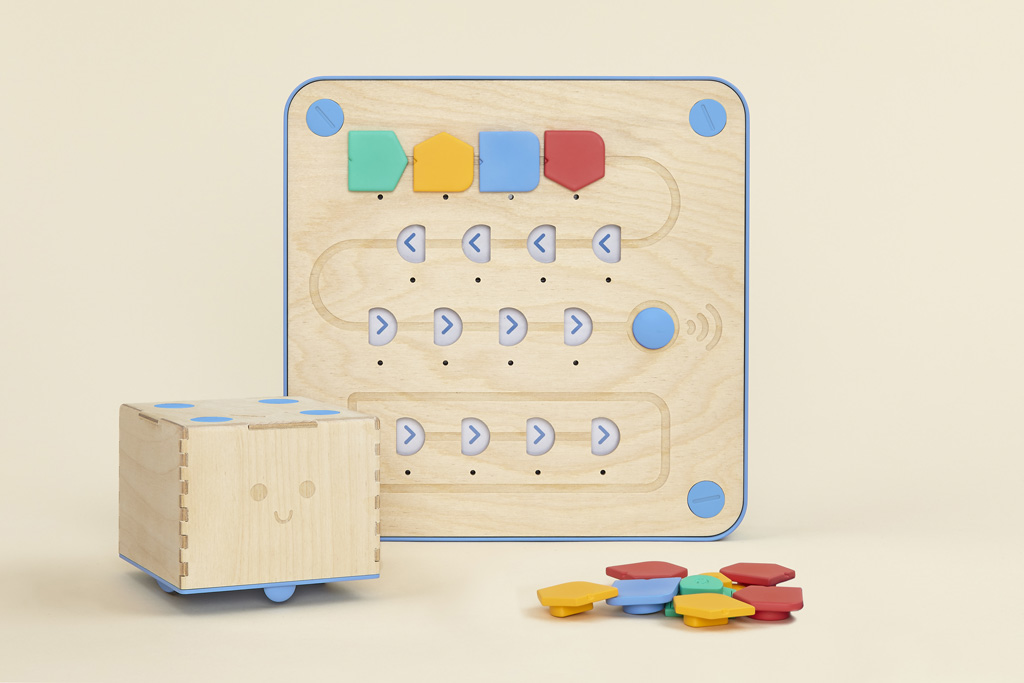
Cubetto is a coding toy that teaches anyone aged three and up computer-programming logic. It was developed by Graphic Communication Design Programme Associate Lecturer Matteo Loglio who co-founded Primo Toys in 2013.
Matteo also works as the company’s Interaction Designer. We caught up with him to find out more about the ideas behind Cubetto and the role of design in education.
Tell us a bit more about Cubetto and how it works.
Cubetto is a tangible programming language for children. It is composed by a smiling wooden robot, a programming board and a set of colourful blocks. By inserting the blocks in the interface, children are writing simple but functional algorithms to solve problems with the robot, using an illustrated map.
What inspired you to start working on a toy that would teach children programming?
It started as a university project during my master studies at MAInD in Lugano. The inspiration came from LOGO: a language designed to introduce children to programming, used in secondary schools in Italy where I grew up. It was a sort of processing for children. The brief was to design a product to introduce children to science and programming, so it clicked as a natural connection.

Coding is something that many adults shy away from, could Cubetto help them too?
Of course! We like to say that people can start using it from three, up to 99 years old.
Why did you choose to work with a physical toy rather than a digital one?
Most of my work happens at the intersection of physical and digital: I have a background in industrial design and a lifelong passion for technology and coding. In the physical computing domain I’ve found the perfect balance of these two worlds.
How did you land on this simple yet playful design? Was it a difficult challenge to create something minimal and educational?
The product went through several iterations on the block language and the interface, before getting to the actual design. At the beginning it was more complex, with quantities and different functionalities, that eventually were removed, leaving only a very simple experience.

Is this a method you see being introduced into schools in the future?
Definitely more in the future, but it’s already happening: the new curriculum includes coding and technology-related subjects starting from the early years. Many schools don’t have the knowledge or the products required to satisfy these requirements and that is where we see products like Cubetto being used in the near future.
Have you always been interested in education through design?
I always try to simplify and reduce information design to the essential. I think this approach is relevant in education and learning in general (not only for children), where knowledge needs to be communicated in a very simple and clear way.
Do you have any other projects coming up?
Yes, I’m constantly working on new ideas and products, you can find out more on my website and on the official Primo website.
More:




